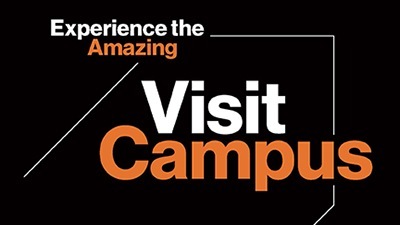Frequently Asked Questions - ASLIE

American Sign Language and Interpreting Education
Frequently Asked Questions
BS Interpretation Frequently Asked Questions
Ability to invest time in ASL skill development:
To become an ASL-English interpreter, one must develop competency in both English and ASL. The more adept students become in both languages’ grammar, linguistic features, discourse structure, and prosody, the more comfortable and skilled they will be at interpreting. As with learning any new language, ASL proficiency cannot be attained by attending classes alone; it requires practicing and using ASL with native ASL signers. Just as those who study spoken languages frequently study abroad to immerse themselves in a new language and culture, ASL students must immerse themselves in the culture and language of Deaf people if they wish to become fluent.
To succeed in this program and graduate with a greater level of confidence, students need to commit to spending significant amounts of time outside of class to record videos, meet with deaf/hard of hearing people for feedback, and immerse themselves in ASL and Deaf Culture by attending community events. Naturally, this makes interpreting a very time-intensive program. Students who have limited availability outside of class time often find their progress is not as robust or advanced as those who are able to expend time in those additional extra-curricular activities. The more hours that students spend outside of class interacting with Deaf people, the faster they progress in their ASL skill development and the greater their readiness for the exciting but challenging field of interpreting.
Students interested in pursuing ASL-English interpreting as a career should take into consideration this additional aspect of time commitment before applying to the program.
Other skills needed to be successful in this program:
- Fluency in ASL
- Commitment to immerse yourself in the Deaf community
- Able to express ideas clearly and effectively in ASL and spoken English
- Broad English vocabulary
- Respectful of cultural differences
- Good interpersonal skills (good people skills)
- Curiosity: strong desire to learn and explore all subjects
- Flexible and adaptable
- Willingness to do the job no matter the subject matter
- Active listening skills
- Stress management skills
To enter the program you need to, at minimum, demonstrate beginning-level competency in ASL. For most students this will mean the completion of a course titled ASL I or Beginning ASL. We will assess your ASL ability through the ASL video sample you will submit as part of your application to verify you satisfy the entry requirement.
Your ASL video sample submitted as part of the application process will be used to determine your initial ASL course placement. Your acceptance letter will note your ASL placement score. ASL II-VII is offered in the ASLIE program and some students begin in ASL II and some in higher-level ASL courses.
For transfer applicants, evaluation of applicable college credit will occur as part of the admission process. A transfer credit summary, of which includes the number of accepted credits and estimated timeline to degree completion, will follow the acceptance letter. Due to the sequential nature of the ASL curriculum and initial ASL course placement, it is possible that a student could transfer in two years of credits but need an additional three or four years to complete the required course work.
A bachelor’s degree in interpreting teaches the skills, ethics, and professional behaviors required to obtain entry-level employment as an interpreter. Professional certification is a knowledge-based and skill-based examination that tests the skills, ethics, and professional behaviors of a working interpreter. Organizations that certify sign language interpreters include the Registry of Interpreters for the Deaf, Boys Town National Research Hospital, and the Board for Evaluation of Interpreters. It should be every interpreter’s aim to gain national certification credentials.
An academic degree is different than professional certification. When you graduate, you will have a Bachelor of Science degree in ASL-English Interpretation. Certification is a credential that interpreters obtain from professional organizations. Generally, professional certification is obtained after students have completed their education and have 1-2 years of work experience. Organizations that certify sign language interpreters include the Registry of Interpreters for the Deaf, Boys Town National Research Hospital, and the Board for Evaluation of Interpreters.
The American Sign Language-English Interpretation program follows a sequential course plan, including ASL II-VII and core interpreting courses. Because this course sequence begins in fall semester, it is rare that a student would be able to begin in spring.
You will submit an ASL video sample as part of the application process. You will then be placed in the appropriate course based upon your ASL placement score. Any previous ASL college credits will then be transferred to RIT/NTID.
It is important to note that the ASL courses and the interpreting courses are sequential. Regardless of how many transfer credits are accepted, if you start the program at Foundations of ASL, ASL II or ASL III, it will be a four-year program; if you start the program at ASL IV or V, it will be a three-year program.
As a student in the ASLIE program, you will receive a substantially reduced tuition rate. Because RIT/NTID receives support from the federal government, students in the ASLIE program pay less than one-half of RIT’s regular tuition. At RIT/NTID, you receive a world-class private university education at a public university price.
Yes. A good number of students double major in ASLIE and something else at RIT. A second major may be added after you complete your first semester of study and requires the review and approval of the ASL-English Interpretation Department and the new academic department to ensure feasibility. The reduced tuition rate is in effect for as long as ASLIE is your primary major.
For a compilation of other general FAQs of interest...




